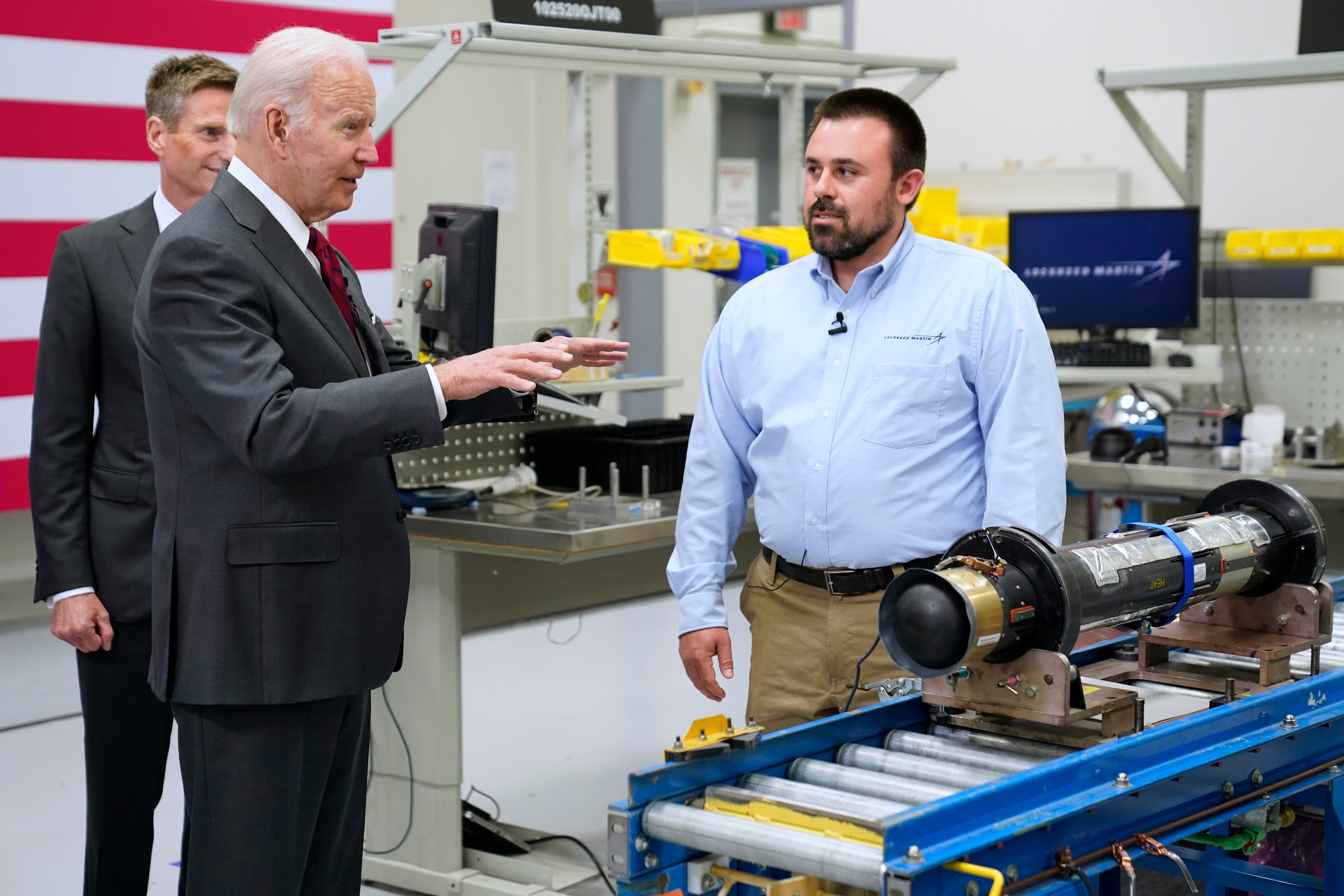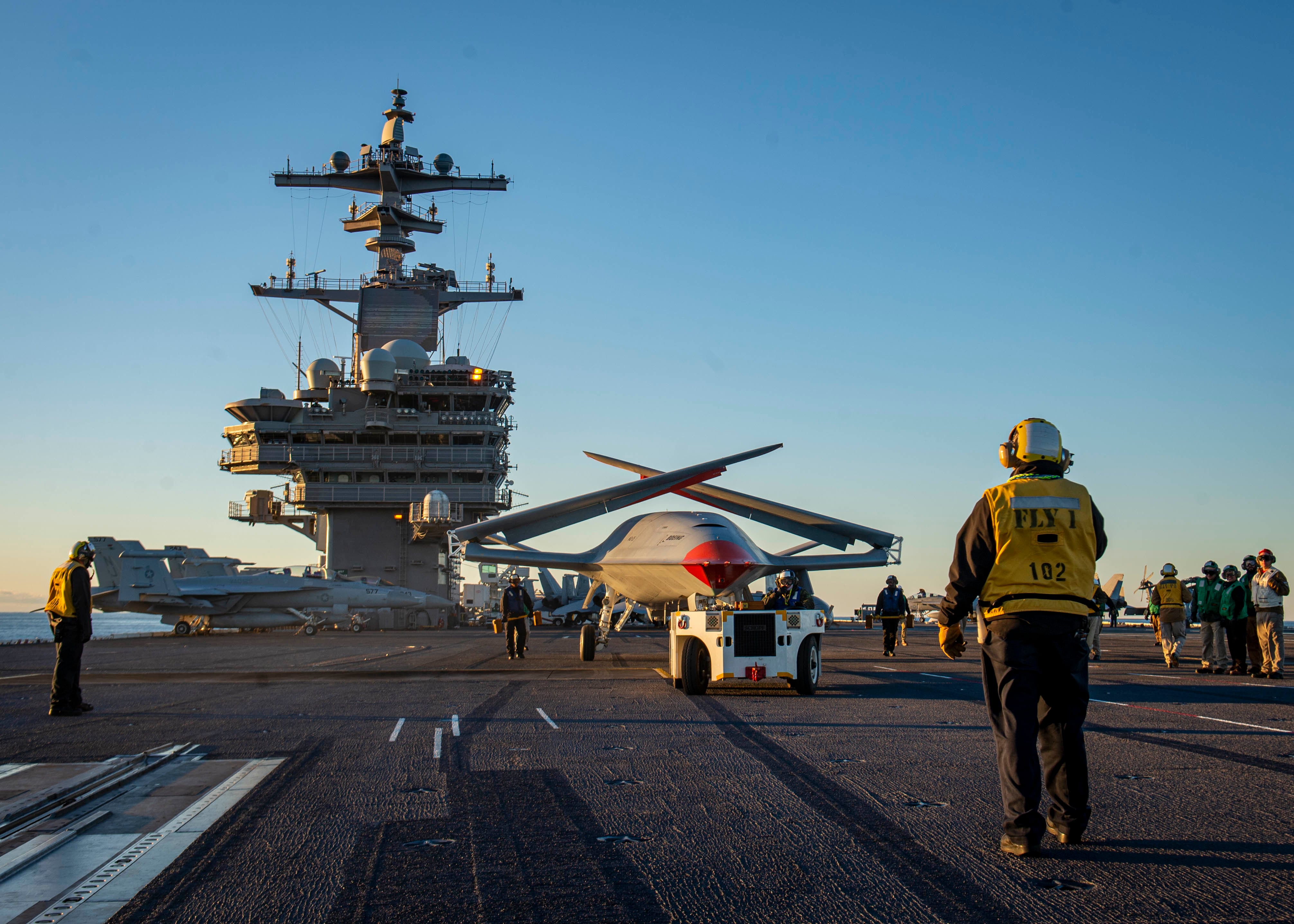WASHINGTON ― Labor shortfalls rooted in the lingering effects of the COVID-19 pandemic remain a millstone around the neck of the defense industry, forcing firms to juggle staff, hold job fairs and find workarounds to keep operations running as smoothly as possible.
In second-quarter earnings calls, executives repeatedly highlighted the challenges staffing problems have presented, in some cases making it harder to finish crucial projects and requiring lowered earnings projections. Some of the largest defense firms predict the labor market will continue to be tight through the end of the year.
Contractors from Raytheon Technologies to BAE Systems to Northrop Grumman are forecasting an influx of business from the U.S. and around the globe in the wake of Russia’s invasion of Ukraine. But labor and supply chain delays are raising questions about how quickly firms will be able to meet the urgent demand.
Raytheon’s chief executive, Greg Hayes, told investors this week the company was caught flat footed when workers who had been temporarily laid off at the start of the year didn’t return at the expected rate. Typically, 75% of workers would have come back; this time, only 25% did, he said.
“The only thing that’s going to solve labor availability — I hate to say this — is a slowdown in the economy because right now there just simply aren’t enough people in the workforce for all of our suppliers,” said Hayes, who called labor woes “a hill to climb” for the company.
Though Raytheon says it is raking in contract awards, on-time fulfillment of those contracts could be a challenge as lead times among its suppliers are doubling or tripling. That’s due to shortages of materials and skilled workers; Raytheon itself had planned to hire 2,000 engineers this year, but due to attrition, it has to hire 5,000, Hayes said.
Defying anxiety about a possible recession and raging inflation, America’s employers added 528,000 jobs last month, restoring all the jobs lost in the coronavirus recession. Unemployment fell to 3.5%, the lowest rate since the pandemic struck in early 2020.
Labor shortages and COVID-19-related absenteeism slowed production at Northrop Grumman’s Palmdale, Calif., plant, where the company builds the F-35 center fuselage. That prompted Northrop to expand its hiring pool to less skilled workers it has been training itself, according to chief executive Kathy Warden.
“We have the workforce we need, but if they aren’t as productive because they aren’t able to be there consistently, that was creating more disruption for us,” Warden said. “That has started to even out. Even with this latest set of COVID disruptions, we have not seen the same level of impact because we’ve taken some mitigating steps.”
Warden said the labor market eased this month and predicted that later this year it would look more like it did before the pandemic. In the meantime, the contractor’s “all hands on deck” approach to hiring and retention is starting to work, she said.
Northrop was not the only firm to project a turnaround.
“The aerospace supply chain has continued to face difficulties, but we’re confident in the eventual recovery as Tier 3 and Tier 4 suppliers work to combat labor shortages,” Honeywell Chief Financial Officer Greg Lewis said, referring to suppliers to firms doing direct business with the Pentagon.
Shipbuilding giant HII plans to hire 5,000 new workers, but after hiring 2,000 so far this year, it is behind schedule, according to its chief executive, Chris Kastner. It’s filling the gap with contracted or “leased” labor, and existing workers, who are showing more willingness to work overtime than they have for the last two years ― but Kastner said the potential for those moves to raise costs is the company’s “greatest risk.”
“Even in this current tight labor environment, we have continued to successfully bring shipbuilders on board and utilize our training programs and apprentice schools, which has positioned us to execute on our commitments,” Kastner said on HII’s earnings call Thursday.
RELATED

Lockheed Martin’s chief financial officer, Jay Malave, described the labor shortage as “an ongoing challenge” but said the firm shifted 50 employees from an unnamed international program to its new F-16 factory in Greenville, South Carolina. That will speed up lagging operations to deliver aircraft next year and help hit a full-capacity run rate in 2024, he said.
“It just goes to the strength and the breadth that we have here at Lockheed Martin. But nonetheless, it’s been a challenge,” Malave said on the company’s recent earnings call. “Our ramp on that program is taking longer than we had originally anticipated largely because of the slower ramp in hiring employees.”
Likewise, Textron, which employs more than 30,000 around the world, used its size to reshuffle workers into needed roles, among other mitigating steps, executives said. Still, it reported problems making on-time deliveries due to supply chain and labor challenges, and executives anticipated the problems would continue through the end of the year.
“Next year, we’re looking to add net 100 people or so a month. So we’re running hiring fairs. We are seeing people coming back into the workforce,” said Textron chief executive Scott Donnelly. “We’re working that hard. It’s the entry level, bringing new people in. And obviously, you’ve got training and development, so there’s only so fast we can do it.”
The management consulting firm McKinsey found that across the aerospace and defense sector, about 50,000 positions remain unfilled. Its 2021 study on “The Great Resignation” showed that as many as 46% of employees in the sector were at least somewhat likely to quit within three to six months.
A separate McKinsey study found companies in aerospace and defense are relatively unattractive places to work. In terms of organizational health ― measured by innovation, accountability and more ― they lag 64% of global companies, the study reported.
According to the National Defense Industrial Association, the “hollowing out of the defense workforce” predates the pandemic as there was already demand for workers with vocational and science, technology engineering or math educations ― and a need for greater workforce diversity.
“Our member companies have reported a persistent gap between supply and demand for welders, technicians, electricians, maintainers, and other skilled workers to meet the defense industrial base’s (DIB) manufacturing needs,” NDIA said in a statement to Defense News.
The Pentagon, in a statement, noted the White House budget request for next year includes more than $200 million for workforce development. In late 2020, the Pentagon announced the National Imperative for Industrial Skills training program.
RELATED

Defense contractors have set up training and apprenticeship programs with vocational schools and community colleges in pockets around the country, but they’re acting individually. NDIA has recommended government and industry work together on systemic fixes: improving domestic STEM education pipelines and clarifying security clearance requirements for defense jobs to ensure prospective hires aren’t overburdened.
Byron Callan, managing director at Capital Alpha Partners, said defense firms like Raytheon should have been better prepared, given the industry’s long-standing hiring problems. Steering through the tight labor market requires spending more on employee recruitment, retention and training, he said.
“It’s not like it’s a new problem. These guys have had trouble hiring people prior to the pandemic, so if they thought it was somehow going to magically resolve itself, it didn’t,” Callan said. “Maybe they’re just too attentive to [profit] margins, and squeezing every dollar you can out of an organization without taking some of these proactive steps.”
British defense contractor BAE Systems, which has a U.S. subsidiary, said the firm’s been able to weather U.S. labor shortfalls and has navigated supply chain constraints by resequencing its production lines. BAE’s chief executive, Charles Woodburn, touted established in-house apprenticeship programs it hopes to use to add workers in anticipation of the uptick in global demand.
“In the U.S., where the labor market is particularly tight, it has been really pleasing to see over 250 former employees come back to work for the business, very much driven by our culture and the noble mission of supporting those who protect us,” Woodburn said on BAE’s recent earnings call.
Aerojet Rocketdyne chief executive Ellen Drake said the company has stepped up recruiting efforts as it looks to hire 400 employees in support of defense sales growth she expects this year.
“We have a huge effort working with recruiting firms and also internal recruiting and partnering with the different organizations around Camden, Arkansas, [and] Huntsville, Alabama, primarily where we’re doing our hiring,” Drake said.
With Megan Eckstein and reporting by The Associated press.
Joe Gould was the senior Pentagon reporter for Defense News, covering the intersection of national security policy, politics and the defense industry. He had previously served as Congress reporter.
Stephen Losey is the air warfare reporter for Defense News. He previously covered leadership and personnel issues at Air Force Times, and the Pentagon, special operations and air warfare at Military.com. He has traveled to the Middle East to cover U.S. Air Force operations.








